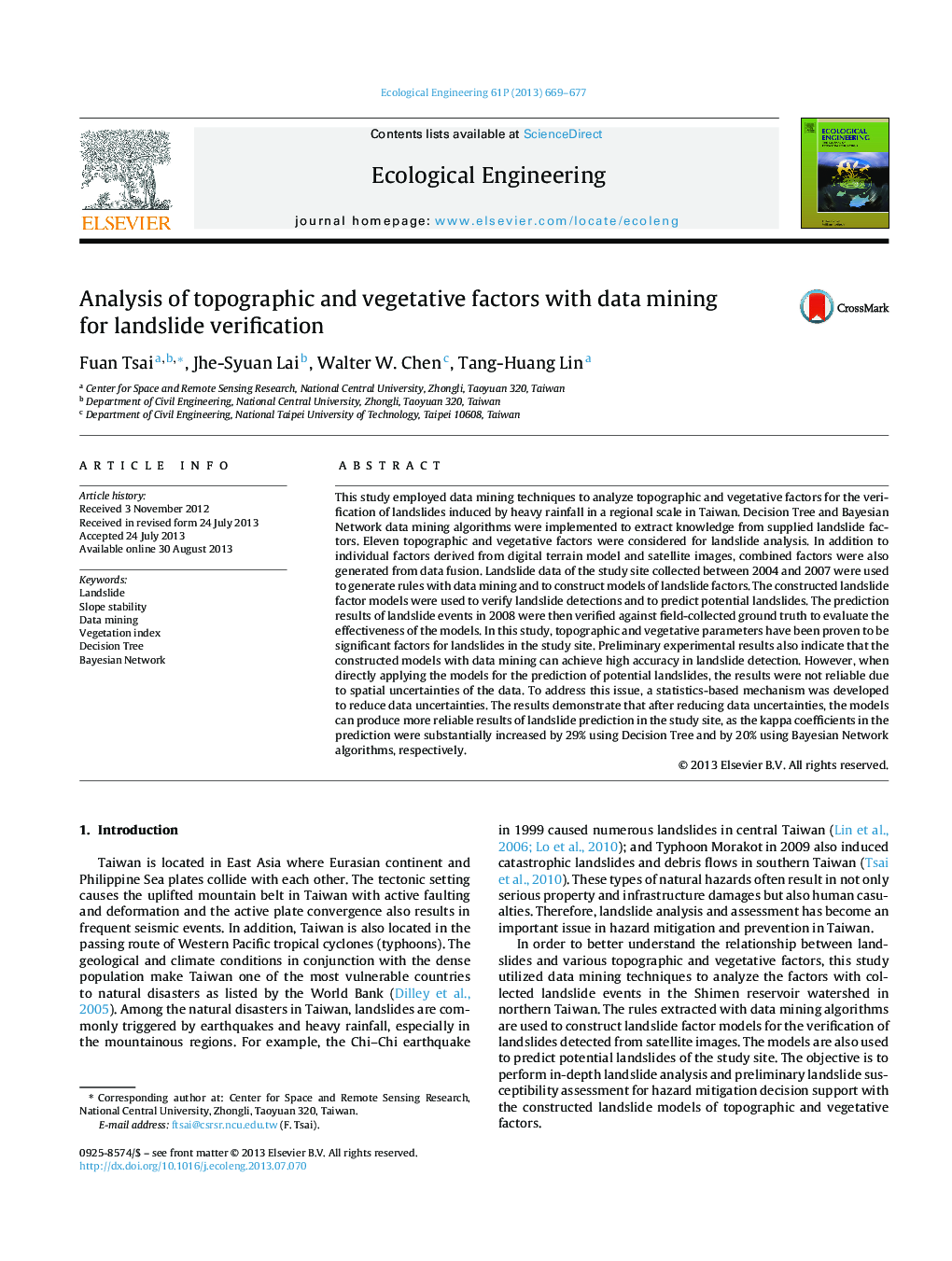| Article ID | Journal | Published Year | Pages | File Type |
|---|---|---|---|---|
| 4389635 | Ecological Engineering | 2013 | 9 Pages |
Abstract
This study employed data mining techniques to analyze topographic and vegetative factors for the verification of landslides induced by heavy rainfall in a regional scale in Taiwan. Decision Tree and Bayesian Network data mining algorithms were implemented to extract knowledge from supplied landslide factors. Eleven topographic and vegetative factors were considered for landslide analysis. In addition to individual factors derived from digital terrain model and satellite images, combined factors were also generated from data fusion. Landslide data of the study site collected between 2004 and 2007 were used to generate rules with data mining and to construct models of landslide factors. The constructed landslide factor models were used to verify landslide detections and to predict potential landslides. The prediction results of landslide events in 2008 were then verified against field-collected ground truth to evaluate the effectiveness of the models. In this study, topographic and vegetative parameters have been proven to be significant factors for landslides in the study site. Preliminary experimental results also indicate that the constructed models with data mining can achieve high accuracy in landslide detection. However, when directly applying the models for the prediction of potential landslides, the results were not reliable due to spatial uncertainties of the data. To address this issue, a statistics-based mechanism was developed to reduce data uncertainties. The results demonstrate that after reducing data uncertainties, the models can produce more reliable results of landslide prediction in the study site, as the kappa coefficients in the prediction were substantially increased by 29% using Decision Tree and by 20% using Bayesian Network algorithms, respectively.
Related Topics
Life Sciences
Agricultural and Biological Sciences
Ecology, Evolution, Behavior and Systematics
Authors
Fuan Tsai, Jhe-Syuan Lai, Walter W. Chen, Tang-Huang Lin,
